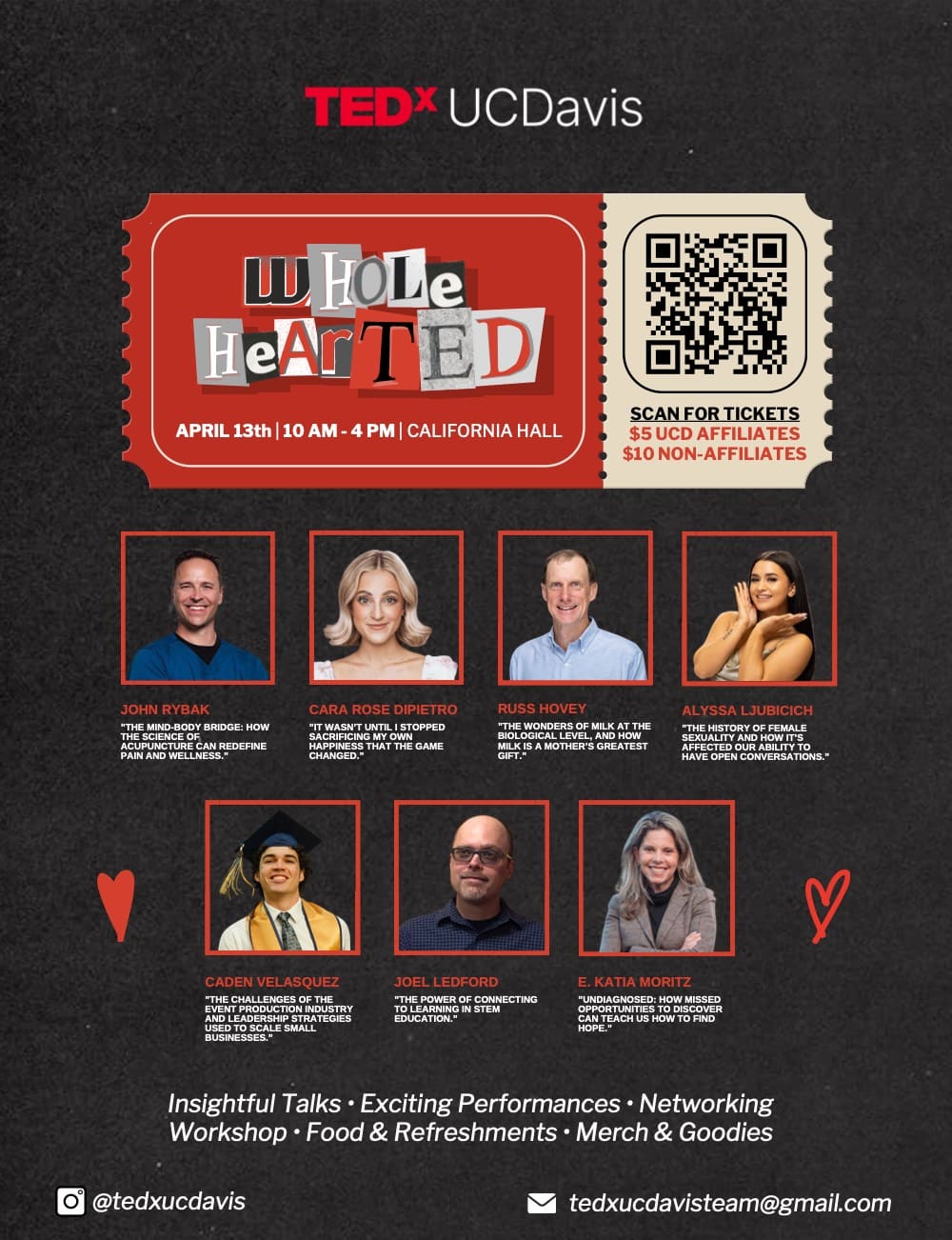
The references below are included for inquiring minds to be able to review the references and fact check what I said in the talk. My intention is to open up the conversation for patients, medical providers, and policy makers about how acupuncture can be integrated and positively impact our modern healthcare environment.
Acupuncture is often hidden behind bias, miscommunications, and myths but the research is out there that shows acupuncture is effective and indicates the extraordinary ways of how it works to make physiologic changes in the body to help people get better and stay better.
The talk is written in a storyline format for a more generalized audience. I encourage medical providers, scientists, and inquiring minds to look at my article published in the November 2023 edition of the Oregon Medical Board Report. That article is a condensed piece written specifically for medical providers to expand their pain management toolkit.
I’m strongly convinced, with an open conversation, the research around acupuncture mechanisms of action can provide the next steps in biotechnology and at the same time transform the lives of patients that are struggling with pain and other health complications.
I’m looking forward to taking the time to break down and explore many of these references so that more people can explore and discover the exciting science behind acupuncture. In the meantime here’s the raw list of my references. Keep in mind that this reference list is far from being exhaustive.
For those of you that are interested in expanding this conversation or to schedule an appointment with our team at our acupuncture clinic in Portland, OR, you can call, email, or schedule online.
John is available for events, Podcasts, and speaking engagements.
References
Amorim, D., Amado, J., Brito, I., Fiuza, S. M., Amorim, N., Costeira, C., & Machado, J. (2018). Acupuncture and electroacupuncture for anxiety disorders: A systematic review of the Clinical Research. Complementary Therapies in Clinical Practice, 31, 31–37. https://doi.org/10.1016/j.ctcp.2018.01.008
Armour, M., Smith, C., Wang, L.-Q., Naidoo, D., Yang, G.-Y., MacPherson, H., Lee, M., & Hay, P. (2019). Acupuncture for depression: A systematic review and meta-analysis. Journal of Clinical Medicine, 8(8), 1140. https://doi.org/10.3390/jcm8081140
Becker, R. O. (2020). The Body Electric: Electromagnetism and the Foundation of Life. William Morrow.
Ding HL, Huang ZH, Ren ZF, et al. Effects of acupuncture on endoplasmic reticulum pathway in exercise-induced skeletal muscle damage in rats and its mechanism. Zhongguo Ying Yong Sheng li xue za zhi = Zhongguo Yingyong Shenglixue Zazhi = Chinese Journal of Applied Physiology. 2021 Jul;37(4):359-364. DOI: 10.12047/j.cjap.6097.2021.044. PMID: 34374254.
Fan, J., Lu, W., Tan, W., Liu, X., Wang, Y., Wang, N., & Zhuang, L. (2022). Effectiveness of acupuncture for anxiety among patients with parkinson disease. JAMA Network Open, 5(9). https://doi.org/10.1001/jamanetworkopen.2022.32133
Han, J.-S. (2004). Acupuncture and endorphins. Neuroscience Letters, 361(1–3), 258–261. https://doi.org/10.1016/j.neulet.2003.12.019
Jiang, Y., Wang, H., Liu, Z., Dong, Y., Dong, Y., Xiang, X., Bai, L., Tian, J., Wu, L., Han, J., & Cui, C. (2013). Manipulation of and sustained effects on the human brain induced by different modalities of acupuncture: An fmri study. PLoS ONE, 8(6). https://doi.org/10.1371/journal.pone.0066815
Kim, N. J., Ryu, Y., Lee, B. H., Chang, S., Fan, Y., Gwak, Y. S., Yang, C. H., Bills, K. B., Steffensen, S. C., Koo, J. S., Jang, E. Y., & Kim, H. Y. (2018). Acupuncture inhibition of methamphetamine‐induced behaviors, dopamine release and hyperthermia in the nucleus accumbens: Mediation of group II MgluR. Addiction Biology, 24(2), 206–217. https://doi.org/10.1111/adb.12587
Langevin, H. (2023, June 14). Gathering data points for acupuncture research. National Center for Complementary and Integrative Health. https://www.nccih.nih.gov/about/offices/od/director/past-messages/gathering-data-points-for-acupuncture-research
Lei BK, Zhao S, Xu T, et al. TGF-β1/ERK/CTGF pathway involved in effect of acupuncture on exercise-induced skeletal muscle fibrosis. Zhen ci yan jiu = Acupuncture Research. 2021 Apr;46(4):306-311. DOI: 10.13702/j.1000-0607.200471. PMID: 33931996.
Levin, M. (2022, October 5). The secret to how the body works: Biologists explains bioelectricity: Michael Levin and Lex Fridman. YouTube. https://youtu.be/ZSddchIGNG0?si=LM2fGdTixyAjKNlG
Liao, C.-C., Liao, K.-R., Lin, C.-L., & Li, J.-M. (2020). Long-term effect of acupuncture on the medical expenditure and risk of depression and anxiety in migraine patients: A retrospective cohort study. Frontiers in Neurology, 11. https://doi.org/10.3389/fneur.2020.00321
Liddle, C. E., & Harris, R. E. (2018). Cellular reorganization plays a vital role in acupuncture analgesia. Medical Acupuncture, 30(1), 15–20. https://doi.org/10.1089/acu.2017.1258
Lin, Jaung-Gen, Kotha, P., Chen, Y-H. (2022). Understandings of Acupuncture Application and Mechanisms. American Journal of Translational Research, 14(3), 1469-1481. PMID: 35422904; PMCID: PMC8991130.
Maeda, Y., Kim, H., Kettner, N., Kim, J., Cina, S., Malatesta, C., Gerber, J., McManus, C., Ong-Sutherland, R., Mezzacappa, P., Libby, A., Mawla, I., Morse, L. R., Kaptchuk, T. J., Audette, J., & Napadow, V. (2017). Rewiring the primary somatosensory cortex in carpal tunnel syndrome with acupuncture. Brain, 140(4), 914–927. https://doi.org/10.1093/brain/awx015
MacPherson, H., & Hammerschlag, R. (2012). Acupuncture and the emerging evidence base: Contrived controversy and rational debate. Journal of Acupuncture and Meridian Studies, 5(4), 141–147.
Makary, M. A., & Daniel, M. (2016). Medical error—the third leading cause of death in the US. BMJ, i2139. https://doi.org/10.1136/bmj.i2139
McFadden, J., & Al-Khalili, J. (2016). Life on the edge: The coming of age of Quantum Biology. Broadway Books.
MacPherson, H., Hammerschlag, R., Coeytaux, R., Davis, R., Harris, R., Kong, J., Langevin, H., Lao, L., Milley, R., Napadow, V., Schnyer, R., Stener-Victorin, E., Witt, C., & Wayne, P. (2016). Unanticipated Insights into Biomedicine from the Study of Acupuncture. Journal of Alternative Complementary Medicine, 22(2), 101-107. doi: 10.1089/acm.2015.0184
MacPherson, H., Vertosick, E. A., Foster, N. E., Lewith, G., Linde, K., Sherman, K. J., Witt, C. M., & Vickers, A. J. (2016). The persistence of the effects of acupuncture after a course of treatment: A meta-analysis of patients with chronic pain. Pain, 158(5), 784–793. https://doi.org/10.1097/j.pain.0000000000000747
Nahin, R. L. (2022). Use of multimodal multidisciplinary pain management in the US. JAMA Network Open, 5(11). https://doi.org/10.1001/jamanetworkopen.2022.40620
Nahin, R. L., Rhee, A., & Stussman, B. (2024). Use of complementary health approaches overall and for pain management by US adults. JAMA, 331(7), 613–615. https://doi.org/10.1001/jama.2023.26775
Napadow, V., Kettner, N., Liu, J., Li, M., Kwong, K. K., Vangel, M., Makris, N., Audette, J., & Hui, K. K. S. (2007). Hypothalamus and amygdala response to acupuncture stimuli in carpal tunnel syndrome. Pain, 130(3), 254–266. https://doi.org/10.1016/j.pain.2006.12.003
National Health Expenditure Historical Data. CMS.gov. (2023, December 13). https://www.cms.gov/data-research/statistics-trends-and-reports/national-health-expenditure-data/historical#:~:text=U.S.%20health%20care%20spending%20grew,spending%20accounted%20for%2017.3%20percent.
Porges, S. W. (2007). The polyvagal perspective. Biological Psychology, 74(2), 116–143. https://doi.org/10.1016/j.biopsycho.2006.06.009
Smith, T. J., & Hillner, B. E. (2019). The cost of pain. JAMA Network Open, 2(4). https://doi.org/10.1001/jamanetworkopen.2019.1532
Starfield, B. (2000). Is US health really the best in the world? JAMA, 284(4), 483. https://doi.org/10.1001/jama.284.4.483
Theysohn, N., Choi, K.-E., Gizewski, E. R., Wen, M., Rampp, T., Gasser, T., Dobos, G. J., Forsting, M., & Musial, F. (2014). Acupuncture-related modulation of pain-associated brain networks during electrical pain stimulation: A functional magnetic resonance imaging study. The Journal of Alternative and Complementary Medicine, 20(12), 893–900. https://doi.org/10.1089/acm.2014.0105
U.S. Department of Health and Human Services. (n.d.-a). Acupuncture: What you need to know. National Center for Complementary and Integrative Health. https://www.nccih.nih.gov/health/acupuncture-what-you-need-to-know?nav=blog
Vickers, A. J., Cronin, A. M., Maschino, A. C., Lewith, G., MacPherson, H., Foster, N. E., Sherman, K. J., Witt, C. M., Linde, K., & Acupuncture Trialists’ Collaboration. (2012). Acupuncture for chronic pain. Archives of Internal Medicine, 172(19), 1444–1453. https://doi.org/10.1001/archinternmed.2012.3654
Vickers, A. J., Vertosick, E. A., Lewith, G., MacPherson, H., Foster, N. E., Sherman, K. J., Irnich, D., Witt, C. M., & Linde, K. (2018). Acupuncture for chronic pain: Update of an individual patient data meta-analysis. The Journal of Pain, 19(5), 455–474. https://doi.org/10.1016/j.jpain.2017.11.005
Yu, J.-S., Zeng, B.-Y., & Hsieh, C.-L. (2013). Acupuncture stimulation and neuroendocrine regulation. International Review of Neurobiology, 11, 125–140. https://doi.org/10.1016/b978-0-12-411545-3.00006-7
Yang, N.-N., Lin, L.-L., Li, Y.-J., Li, H.-P., Cao, Y., Tan, C.-X., Hao, X.-W., Ma, S.-M., Wang, L., & Liu, C.-Z. (2022). Potential mechanisms and clinical effectiveness of acupuncture in depression. Current Neuropharmacology, 20(4), 738–750. https://doi.org/10.2174/1570159×19666210609162809
Zhang, R., Lao, L., Ren, K., & Berman, B. M. (2014). Mechanisms of acupuncture–electroacupuncture on persistent pain. Anesthesiology, 120(2), 482–503. https://doi.org/10.1097/aln.0000000000000101
Zhang, C., Heaney, J., & Kapteina, H. (2016). Invisible rainbow: A physicist’s introduction to the science behind Classical Chinese Medicine. North Atlantic Books.



